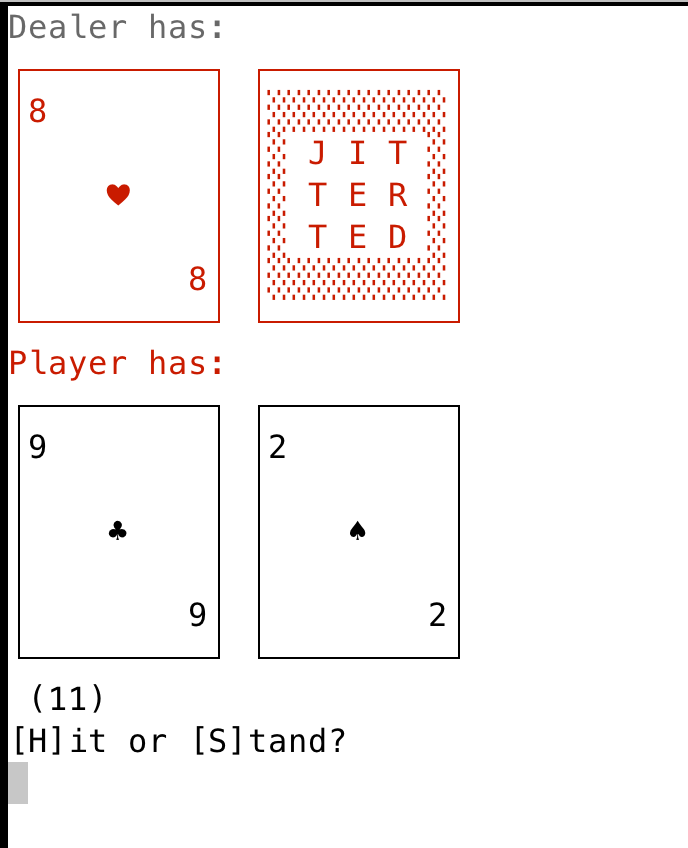This is the starter code base for the "Refactoring to Hexagonal Architecture" course.
You must have the following already set up and running on your machine:
- Java 17 (or later)
- Ensure that this is the default Java runtime by typing
java -versionat the command line, and you should see something like:openjdk version "17.0.4.1" 2022-08-12
- Ensure that this is the default Java runtime by typing
- git 2.36 (or later)
- IntelliJ IDEA 2022.3.2 (or later), either the Community or Ultimate Edition
- or Eclipse (if you must, though all course examples will use IntelliJ IDEA)
Before opening up the project using your development environment, make sure that you can build the project from the command-line by running:
./mvnw clean testmvnw clean testOnce the project compiles from the command-line, open it in your development environment and ensure that you can run all of the unit tests -- if everything is set up properly, they will all pass.
To run the game, it works best if you run it in a real terminal window and not inside the IDE (which may not recognize the "ANSI" messages used to change colors and move the cursor around). To do this, use Maven to build and package the JAR and then you can run it:
./mvnw clean packagemvnw clean packageThis will download dependencies, compile the code, run the tests, and then
package it into a JAR file that it will put in the target directory.
To run it, do the following at the command-line in the project's directory:
java -jar target/blackjack-1.0.2.jarjava -jar target\blackjack-1.0.2.jar
When running in the terminal, the game will look something like this:
followed by the game itself, which starts with the "initial deal" of two cards each to the Dealer (top row) and you, the Player (bottom row):
Players play against the Dealer, not each other. The goal of the game is to get a hand with a score as close to 21 without going over, as well as beating the score of the Dealer's hand. The score of the hand is the sum of the point values of its cards. If a Player's hand score is over 21, the Player loses ("busts").
Blackjack uses a standard deck of 52 playing cards. Each card has a rank: Ace (A), 2, 3, 4, 5, 6, 7, 8, 9, 10, Jack (J), Queen (Q), or King (K). The card's rank determines its scoring value: numbered cards 2-10 are worth their number; face cards (Jack, Queen, King) are worth 10 points; Aces are worth 1 point or 11 points, whichever would bring the hand value closer to 21 without exceeding it.
Each round proceeds as follows:
- The dealer shuffles the deck and deals two cards "face up" (with the Rank and Suit of the card showing) to each player. The dealer deals their cards with one card "face down" (with only the back showing, known as a "hole" card) and one card "face up".
- The dealer asks the first player whether they want to "hit" (get another card from the deck) or "stand" (not get any more cards).
- If they choose to stand, their turn is over and the game moves on to the next player, if any. If not, it's the dealer's turn.
- If the player hits, the dealer deals them a card from the deck, face up, and their hand score changes based on the additional card.
- If this causes their score to go over 21, they have "busted" and immediately lose the round and play continues with the next player.
- If they haven't busted, they continue to have the option to hit or stand again.
Once all players have either busted or stood, it's the dealer's turn to play. They turn their face-down card over so the card's Rank and Suit are shown. They then hit until their score is 17 or higher at which point they must stand. The dealer cannot decide to hit or stand, if their hand's score is 16 or lower, they must hit, and at 17 or higher, they must stand.
If the dealer busts, any players who did not bust earlier automatically win the round. Otherwise, each player wins if they have a strictly higher score than the dealer, or loses if they have a strictly lower score, and "pushes" (ties) if they have the same score.

